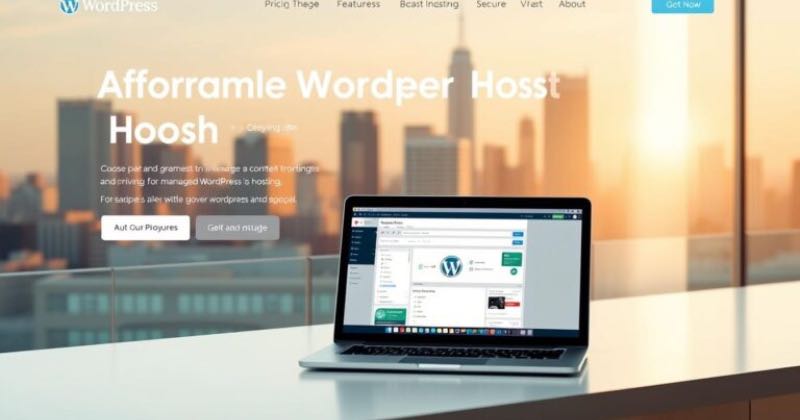Compare Google Drive vs Dropbox for Teams: Storage & Features
Selecting the best cloud storage platform is a critical decision for teams aiming to streamline their workflows. With so many options available, understanding the key differences can help teams make an informed choice.
One of the first factors to consider is the amount of free storage offered. While some platforms provide generous starting space, others may limit initial capacity, impacting team adoption and scalability.
Beyond storage limits, teams should evaluate essential features like syncing speeds, security protocols, and collaboration tools. These elements play a significant role in ensuring smooth operations and data protection.
This article will explore these aspects in detail, helping teams identify the solution that best fits their needs and workflow requirements.
Introduction to Google Drive and Dropbox for Teams
Cloud storage has become a cornerstone for modern team productivity. With the rise of remote work and the need for seamless file sharing, platforms like Google Drive and Dropbox have emerged as essential tools for businesses. These solutions not only simplify file management but also enhance collaboration and data security.
Overview of Google Drive and Dropbox
Dropbox, founded in 2007, pioneered the concept of cloud storage, offering a straightforward file hosting service. In contrast, Google Drive, launched in 2012, integrated storage with a robust productivity suite, making it a versatile choice for document collaboration. While Dropbox supports Linux, Google Drive lacks a native Linux app, which may influence platform preference for some users.
Why Teams Need Cloud Storage Solutions
Teams today require reliable cloud storage for several reasons:
- Collaboration: 83% of knowledge workers rely on cloud platforms for teamwork, enabling real-time editing and simultaneous access to files.
- Remote Work: With 72% of employees accessing files from multiple devices daily, cloud storage ensures flexibility and accessibility.
- Security: 60% of businesses report cloud security incidents annually, making robust encryption and two-factor authentication critical features.
- Cost Efficiency: Cloud subscription models often prove more cost-effective than on-premise storage, especially for growing teams.
These factors highlight the importance of choosing a platform that aligns with your team’s specific needs and workflow requirements.
Storage Capacity: Google Drive vs Dropbox
Understanding storage options is key for teams managing large files. Whether you’re handling multimedia, documents, or project data, the right storage plan ensures smooth operations.
Free Storage Options
Both platforms offer free tiers, but the allocations differ significantly. One provides 15GB of shared space across email and photos, while the other starts with just 2GB. For teams with heavy email usage, shared storage can quickly become a bottleneck.
Additionally, referral programs can help expand free storage. One platform offers 500MB per referral, up to 16GB, making it a viable option for growing teams on a budget.
Paid Storage Plans
For teams needing more storage, paid plans offer scalable solutions. One platform provides 2TB for $9.99 per month, while another offers 3TB at $16.58. Enterprise options go even further, with 5TB+ and 15TB team storage pools available.
Hidden costs, such as mandatory user licenses, can impact overall expenses. Teams should carefully evaluate these factors when choosing a plan.
Shared Storage Considerations
Team storage pools vary between platforms. One allocates storage per user, while the other offers shared TB allocations. This distinction is crucial for teams managing large files cloud projects, such as architecture firms handling 4TB BIM files.
Storage optimization also plays a role. One platform compresses photos to save space, while the other retains original quality. These differences can influence long-term storage needs.
| Plan | Storage | Cost per Month |
|---|---|---|
| Basic | 2GB | Free |
| Professional | 3TB | $16.58 |
| Enterprise | 15TB | Custom |
File Syncing and Speed Comparison
Efficient file syncing is a game-changer for team productivity. When working with large files or collaborating across locations, the speed and reliability of your cloud platform can significantly impact workflow efficiency. Let’s explore how different syncing technologies enhance performance.
Block-Level Sync in Dropbox
Dropbox’s block-level sync technology reduces update times by 65% for large files. Instead of re-uploading entire files, it only syncs the changed portions. This approach conserves bandwidth and speeds up the process, especially for teams handling massive PowerPoint presentations or 4K video projects.
Google Drive’s Syncing Capabilities
Google Drive uses progressive loading to sync files efficiently. While it may take longer for large uploads—31 minutes for a 3GB file compared to Dropbox’s 21 minutes—its integration with productivity tools ensures seamless collaboration. Offline access is also supported, allowing users to work without interruptions.
LAN Sync and Its Impact on Speed
LAN sync bypasses cloud uploads by enabling direct file transfers over local networks. With speeds up to 1Gbps, this feature is ideal for teams sharing large files within the same office. It minimizes reliance on external servers, ensuring faster and more reliable transfers.
Choosing the right service depends on your team’s needs. Whether prioritizing speed, bandwidth conservation, or offline access, understanding these syncing capabilities ensures smoother operations and enhanced productivity.
Security Features for Teams
Ensuring robust security is a top priority for teams relying on cloud platforms. With sensitive data being stored and shared, understanding the protective measures in place is essential. This section explores encryption, authentication, and breach response to help teams make informed decisions.
Encryption Methods in Google Drive and Dropbox
Both platforms use AES-256 encryption, but their implementations differ. One employs dual-key encryption, requiring third-party plugins for client-side protection. The other uses a single-key system, streamlining the process but potentially offering less flexibility. Teams should evaluate which approach aligns with their business needs.
At-rest and in-transit encryption are standard, ensuring data remains secure during storage and transfer. Compliance certifications like HIPAA, GDPR, and SOC2 further validate these measures, providing peace of mind for regulated industries.
Two-Factor Authentication and Password Protection
Two-factor authentication (2FA) adds an extra layer of security. Options include U2F keys and SMS-based codes, each with its own advantages. Admin controls, such as device approval workflows and IP restrictions, enhance protection by limiting access to authorized users.
Built-in security awareness programs educate employees on best practices, reducing the risk of human error. These features collectively strengthen the platform’s defenses against unauthorized access.
Data Breach History and Security Concerns
Despite robust measures, breaches can occur. A recent incident exposed customer emails and phone numbers, highlighting the importance of rapid response. Historical resolution timelines show that quick action minimizes damage, making breach response times a critical factor for teams.
Ransomware protection, such as 10-year version history, ensures data recovery in case of attacks. Regular third-party security assessments and granular audit logs further enhance transparency and accountability.
File Sharing and Collaboration Tools
Effective file sharing and collaboration are essential for team productivity. Modern platforms offer advanced tools to streamline workflows, ensuring seamless access to documents and folders. Let’s explore the key features that make these tools indispensable for teams.
Sharing Options in Dropbox
Dropbox excels in file sharing with its Transfer feature, supporting files up to 250GB. Teams can set link permissions, choosing between viewer and commenter roles. Expiring links add an extra layer of security, allowing users to specify access durations.
Watermarking capabilities protect sensitive documents, while approval workflows simplify review processes. Dropbox templates integrate seamlessly, ensuring consistency across projects.
Google Drive’s Collaboration Features
Google Drive stands out with its 5TB file limit and real-time editing. Up to 100 users can simultaneously edit documents, making it ideal for large teams. The platform’s @mention system ensures notifications are customized for efficient communication.
Mobile collaboration is enhanced with annotation tools, while version naming conventions provide clarity. Auto-save labels and manual naming options cater to diverse team preferences.
Real-Time Editing and Permissions
Real-time editing is a game-changer for team collaboration. Spreadsheet cell conflict resolution minimizes errors, while activity dashboards offer insights through heat maps and timeline views. External collaborator onboarding processes are streamlined, ensuring smooth project transitions.
| Feature | Dropbox | Google Drive |
|---|---|---|
| File Size Limit | 250GB | 5TB |
| Simultaneous Editors | 50 | 100 |
| Link Expiration | Date-Specific | Custom Durations |
Choosing the right platform depends on your team’s needs. Whether prioritizing file sharing limits, real-time editing, or advanced permissions, these tools ensure efficient and secure collaboration.
Integration with Productivity Suites
Seamless integration with productivity suites is essential for modern teams. Whether managing projects, collaborating on documents, or automating workflows, the right tools can significantly enhance efficiency. Let’s explore how leading platforms integrate with popular suites and third-party apps.
Google Workspace Integration
Google Workspace offers a robust ecosystem with over 300 marketplace apps. From CRM systems like Salesforce to project management tools like Asana, teams can customize their workflows effortlessly. The integration ensures real-time collaboration, with features like @mentions and version history.
AI-powered tools like Duet AI further enhance productivity, automating repetitive tasks and providing intelligent suggestions. This makes Google Workspace a versatile choice for teams looking to streamline operations.
Dropbox’s Microsoft 365 Integration
Dropbox integrates seamlessly with Microsoft 365, allowing users to edit Office files directly within the platform. This native experience eliminates the need for constant downloads and uploads, saving time and reducing errors.
AI tools like Microsoft Copilot enhance this integration, offering smart suggestions and automating workflows. Dropbox also supports single sign-on (SSO) with major providers, ensuring secure and convenient access for teams.
Third-Party App Support
Both platforms offer extensive third-party app support, but the depth of integration varies. Dropbox provides over 100 integrations, including Zapier automation templates and CRM connectivity with HubSpot. Google Workspace, on the other hand, boasts a larger app marketplace with 300+ options.
- Automation: 500+ pre-built workflows in Zapier vs. 300+ in Google Workspace.
- CRM: Salesforce and HubSpot integrations for seamless customer management.
- Developer Resources: SDK availability and comprehensive documentation for custom integrations.
These integrations ensure teams can tailor their workflows to meet specific needs, enhancing productivity and collaboration.
File Organization and Search Capabilities
Organizing and finding files efficiently is crucial for team productivity. With the increasing volume of data, advanced search and organization tools are essential for seamless workflow management. These features ensure teams can locate and manage their resources quickly and effectively.
Advanced Search Features
One platform offers OCR technology that scans over 100 languages, making it easier to find text within images and PDFs. Natural language search allows users to type queries like “Budget Q3 spreadsheet” for precise results. Saved search templates simplify recurring queries, saving time for teams.
Metadata indexing, including EXIF data and custom properties, enhances search accuracy. AI-powered recommendations suggest relevant files based on usage patterns, streamlining the discovery process.
File Organization Tools
Another platform excels with automated folder actions, such as file conversion workflows. Bulk tagging tools, including CSV import/export capabilities, make it easy to categorize large volumes of files. Folder structure templates cater to specific team needs, such as marketing or legal setups.
File retention policies automatically archive older files, while duplicate file finders ensure storage efficiency. These tools collectively enhance management and accessibility.
Tagging and Naming Conventions
Effective tagging and naming conventions are vital for organized workflows. Custom properties and metadata indexing allow teams to categorize files systematically. Keyboard shortcuts and dark mode browsing improve user experience, especially for teams working long hours.
By adopting these practices, teams can ensure their files are easy to locate, manage, and collaborate on, boosting overall productivity.
Multimedia Handling and Editing
Handling multimedia files efficiently is crucial for teams working with visual and audio content. Whether managing photos, editing videos, or transcribing audio, the right tools can significantly enhance productivity. This section explores the key features that make multimedia management seamless and effective.
Photo and Video Editing Tools
One platform supports 4K video markup, ideal for high-resolution projects, while another limits playback to 1080p. For photos, RAW file support ensures professional-grade editing, and AI-powered album creation simplifies organization. Video frame grab tools are perfect for storyboarding, enabling teams to visualize projects efficiently.
Bulk resize tools for image assets save time, and EXIF data preservation ensures metadata remains intact during sharing. These capabilities make multimedia editing faster and more intuitive for teams.
Transcription and Media Playback
Audio transcription accuracy rates vary, with one platform achieving 92% accuracy compared to another’s 85%. This feature is invaluable for creating subtitles or converting spoken content into text. Media playback options include speed control and annotation tools, enhancing the review process for videos and podcasts.
Live photo support on mobile apps ensures seamless playback of dynamic images, while thumbnail generation speeds optimize browsing for large libraries. These features collectively improve accessibility and usability.
Slideshow and Podcast Management
Slideshow creation varies between platforms, with one offering diverse templates and the other focusing on customization. Podcast episode management workflows simplify content organization, making it easier for teams to handle audio projects. These tools ensure multimedia projects are both professional and engaging.
| Feature | Platform A | Platform B |
|---|---|---|
| Video Resolution | 4K | 1080p |
| Audio Transcription Accuracy | 92% | 85% |
| RAW File Support | Yes | Limited |
Pricing Plans for Teams
Choosing the right pricing structure is essential for teams looking to maximize their budget while meeting storage needs. With varying plans and features, understanding the costs involved can help teams make informed decisions that align with their workflow requirements.
Google Drive’s Pricing Structure
Google Workspace offers flexible plans ranging from $6 to $18 per user per month. These tiers provide scalable storage options, with the highest plan offering 5TB of shared space. For larger teams, this can be a cost-effective solution, especially when combined with annual contract discounts.
Hidden costs, such as API call charges, should be considered. However, the platform’s free trial duration of 14 days allows teams to test features before committing. Nonprofit and educational institutions can also access discounted rates, making it a versatile choice for diverse organizations.
Dropbox’s Business Plans
Dropbox’s business plans start at $20 per user per month, scaling up to $32 for advanced features. The platform offers up to 15TB of storage, making it ideal for teams handling large multimedia files. Storage overage fees are structured transparently, ensuring no unexpected costs.
Enterprise teams can negotiate custom plans, leveraging bulk discounts for 500+ users. The 30-day free trial provides ample time to evaluate the platform’s capabilities. Additionally, support fees are clearly outlined, helping teams budget effectively.
Cost-Effectiveness for Large Teams
For large teams, calculating the true cost involves considering bandwidth, storage, and user licenses. A marketing agency, for example, saved 20% annually by optimizing file retrieval processes with one platform. ROI calculators can help teams assess long-term savings.
Plan downgrades may result in data loss, so teams should carefully evaluate their needs. Annual contracts often provide significant savings compared to monthly subscriptions. By analyzing per-user costs at different team sizes, organizations can choose the most economical option.
Ease of Use and User Interface
A seamless user interface is critical for teams relying on cloud platforms for daily tasks. Both platforms offer intuitive designs, but their approaches to navigation and accessibility differ significantly. Understanding these distinctions can help teams choose the right tool for their workflow.
Interface and Navigation
One platform features a clean, minimalist design with a focus on productivity tools. Its navigation is straightforward, allowing users to access files and folders with just a few clicks. The apps are designed to reduce clutter, making it easier for new employees to onboard quickly.
In contrast, another platform offers more customization options, such as folder color coding and bulk actions. These features enhance organization but may require a steeper learning curve. Contextual right-click menus and tutorial systems further improve usability.
User Experience
One platform’s desktop app has a smaller install size, making it lightweight and efficient. It uses only 15% CPU during sync, ensuring smooth performance even on older devices. Dark mode and screen reader support add to its accessibility, catering to diverse user needs.
The other platform, while feature-rich, consumes more resources, with CPU usage reaching 50% during sync. However, its cross-platform consistency—whether on Windows or macOS—ensures a uniform experience for all users.
Mobile and Desktop App Comparison
Both platforms offer robust mobile and desktop apps, but their functionalities vary. One excels in notification management, allowing users to customize alerts for specific folders or files. The other focuses on speed, with bulk action processing that saves time for large teams.
Beta program access is available on both platforms, enabling users to test new features before they are widely released. This ensures teams can stay ahead of the curve while providing valuable feedback to developers.
File Recovery and Versioning
Efficient file recovery and versioning are essential for teams managing critical data. Whether restoring lost files or tracking changes, these features ensure seamless workflow continuity. This section explores the tools and strategies available for effective file management.
Google Drive’s File History and Recovery
Google Drive offers robust file history and recovery options. With Google Vault, teams can retain files indefinitely, ensuring compliance with legal and regulatory requirements. The platform also supports point-in-time recovery, allowing users to restore specific versions of a file.
Mass restore capabilities make it easy to recover multiple files at once. Version labeling requirements ensure clarity, while auto-purge rules help manage storage efficiently. These features collectively enhance data protection and accessibility.
Dropbox’s Rewind Feature
Dropbox’s Rewind feature provides a unique approach to file recovery. Teams can restore their entire account to a previous state, ideal for recovering from ransomware attacks or accidental deletions. The platform retains versions for up to 10 years, offering long-term data security.
Ransomware rollback workflows simplify recovery, while audit trail completeness ensures transparency. Legal hold implementation further enhances compliance, making Dropbox a reliable choice for teams handling sensitive data.
Version Control for Teams
Effective version control is crucial for collaborative projects. Google Drive limits versions to 100, while Dropbox offers unlimited versioning. This distinction is important for teams managing large projects with frequent updates.
Approval chains for version publishing ensure accountability, while branching version strategies support complex workflows. Storage impact of version retention should be considered, as it can affect overall capacity and costs.
| Feature | Google Drive | Dropbox |
|---|---|---|
| Version Retention | 100 versions | Unlimited |
| File Recovery | Point-in-time | Account-wide Rewind |
| Legal Hold | Indefinite (Vault) | 10 years |
Choosing the right platform depends on your team’s needs. Whether prioritizing long-term retention, recovery granularity, or version control, these tools ensure efficient and secure file management.
Compare Google Drive vs Dropbox for Teams: Which is Better?
Deciding between two leading cloud platforms can significantly impact team productivity and workflow efficiency. Both solutions offer unique strengths, but understanding their differences is crucial for making an informed choice. This section breaks down the key aspects to help teams select the best fit.
Key Differences and Similarities
While both platforms excel in cloud storage, their approaches differ. One integrates seamlessly with productivity suites, offering real-time collaboration tools. The other focuses on file syncing and sharing, with advanced features like block-level sync. Both provide robust security, but their encryption methods vary.
Storage options also differ. One offers shared storage across email and photos, while the other provides dedicated space per user. These distinctions can influence scalability and cost-effectiveness for teams.
Best Use Cases for Each Platform
Creative teams may prefer one platform for its multimedia handling and editing tools. Engineering teams, on the other hand, might favor the other for its LAN sync and version control capabilities. Hybrid deployments are possible, but migration paths should be carefully planned.
Training resources and customer support benchmarks also play a role. Teams should evaluate these factors to ensure smooth adoption and ongoing success.
Final Recommendations for Teams
For teams prioritizing collaboration and integration, one platform stands out. For those focused on file syncing and security, the other is a strong contender. Sustainability commitments and data portability ease should also be considered when making a decision.
| Feature | Platform A | Platform B |
|---|---|---|
| Storage | Shared 15GB | Dedicated 2GB |
| Syncing | Progressive Loading | Block-Level Sync |
| Security | Dual-Key Encryption | Single-Key Encryption |
| Collaboration | Real-Time Editing | File Sharing |
By evaluating these factors, teams can make a decision that aligns with their specific needs and goals. Whether prioritizing collaboration, security, or scalability, the right platform can enhance productivity and streamline workflows.
Making the Right Choice for Your Team’s Needs
Finding the ideal solution for your team’s workflow requires careful evaluation. Start with a detailed assessment of your current processes and future goals. This will help you identify the features that matter most, such as security, collaboration tools, and scalability.
Consider implementing a pilot program to test the platform in real-world scenarios. This allows your team to experience its functionality and identify potential challenges. A cost-benefit analysis can also provide clarity on long-term value versus expenses.
Security audits and integration testing are essential steps to ensure compatibility and data protection. Track user adoption rates to measure how well the platform fits into daily workflows. Finally, establish a continuous evaluation schedule to adapt to evolving needs and technologies.
By following these steps, you can confidently choose the right cloud storage solution that aligns with your team’s unique requirements and enhances productivity.



